Black and white birds are nature’s living artwork—bold, beautiful, and utterly captivating. They’re not just birds; they’re a statement in your garden, adding an effortless touch of elegance and charm.
Imagine the contrast: sleek black feathers against crisp white wings, gliding gracefully through the air or perched delicately on a branch. Each species brings its own flair, turning every moment into a visual masterpiece. Whether they’re a flash of color in a sea of greenery or a serene figure against a clear sky, they never fail to leave an impression.
These birds aren’t just stunning to look at; they’re personalities in flight, adding life and rhythm to your garden. Get ready to meet fourteen magnificent black and white birds that will make your outdoor space feel like a haven of peace and sophistication. Prepare to be enchanted!
Magpie
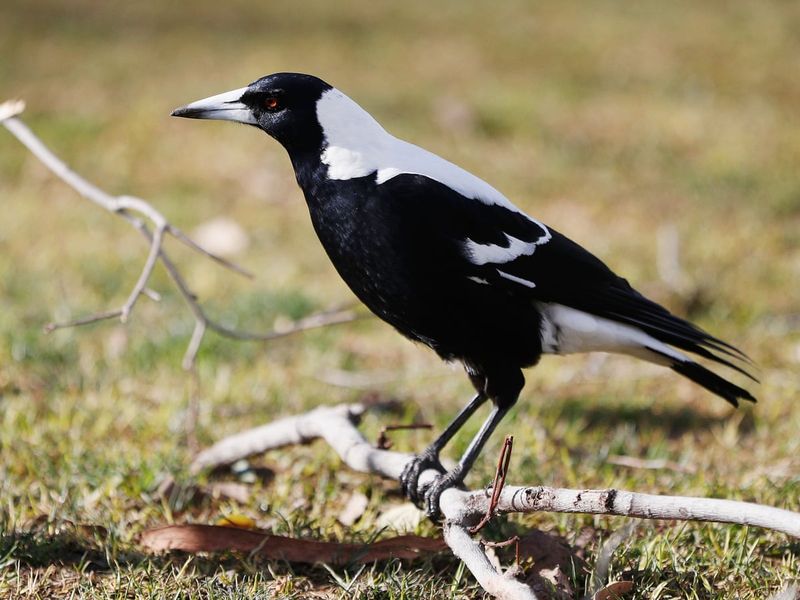
The magpie, with its striking black and white plumage, is a true spectacle in any garden. Known for its intelligence and curious nature, this bird often engages in playful antics, making it a delightful visitor.
One might spot it prancing around with shiny objects, a testament to its curious personality. Magpies are not just intelligent but also social creatures, often seen in groups.
They are known for their complex vocalizations, adding a melodious backdrop to your garden. These birds thrive in various environments, adapting effortlessly to both rural and urban settings.
Pied Wagtail
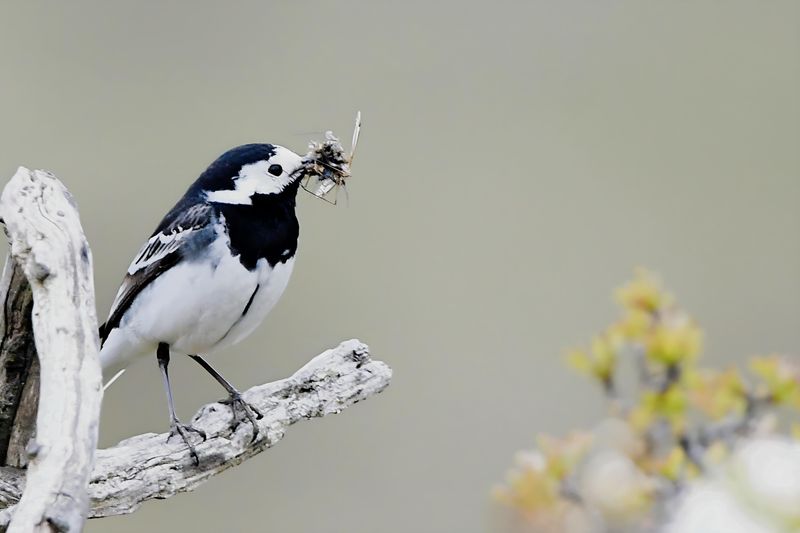
The Pied Wagtail, with its constant tail wagging, brings energy to every garden it visits. This small, slender bird is easily identifiable by its contrasting black and white feathers and its lively demeanor.
Often seen flitting about open spaces, the Pied Wagtail thrives near water bodies, where it catches insects mid-flight. Its presence is a delightful dance, a charming spectacle for onlookers.
With a penchant for exploring, it adds life and movement to the garden landscape. Its adaptability and preference for open spaces make it a frequent garden guest.
Avocet
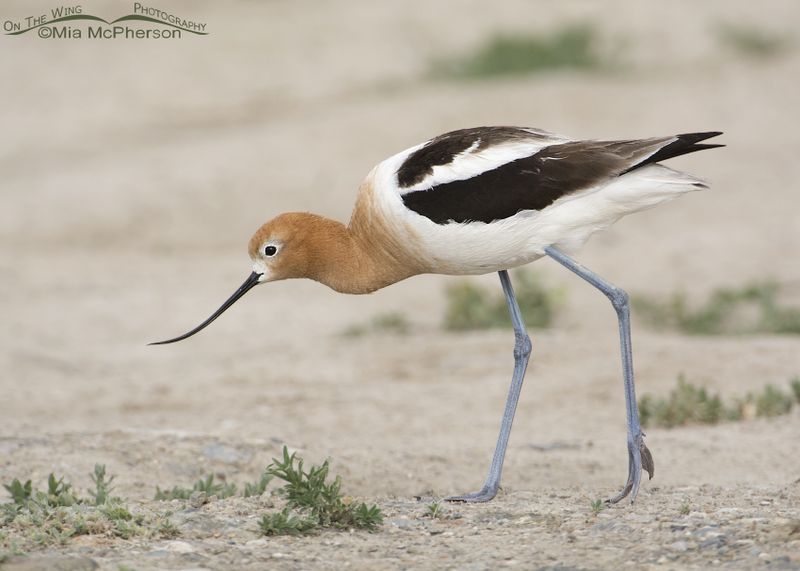
The Avocet is a sight to behold with its unique upturned bill and striking black and white plumage. Known for its graceful wading, this bird can often be seen in shallow waters, sifting through the mud for food. Its elegant movements make it a fascinating addition to any garden pond.
Avocets are not just pretty faces; they play a crucial role in controlling insect populations, making them valuable allies for gardeners. Their intriguing foraging behavior, often involving sweeping their bills from side to side, is a delightful spectacle.
Fun fact: The Avocet’s distinctive bill is perfectly adapted for catching small invertebrates, showcasing nature’s brilliant engineering.
Black-capped Chickadee
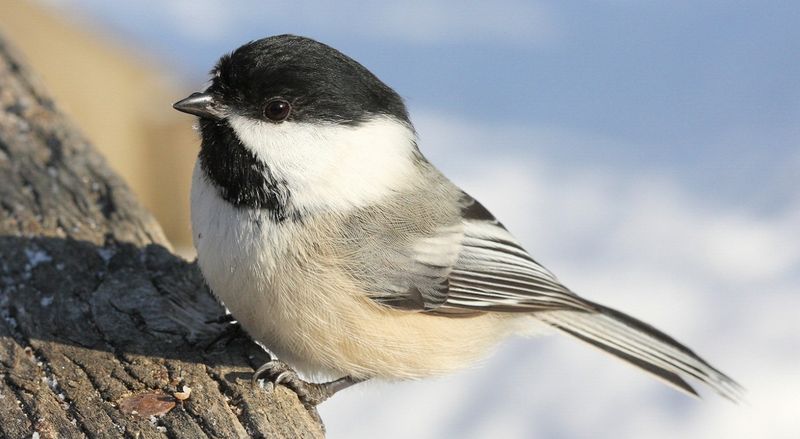
With a name as endearing as its appearance, the Black-capped Chickadee brings joy to gardens year-round. Its black cap and bib contrast charmingly with its white cheeks, creating a distinctive look.
This small bird is known for its curiosity and friendliness, often approaching feeders without hesitation. Its cheerful, bubbly song is a staple of winter gardens, providing warmth even in the coldest months.
An active and agile flyer, the Chickadee is constantly on the move, searching for seeds and insects, making it a lively garden companion.
Eastern Kingbird
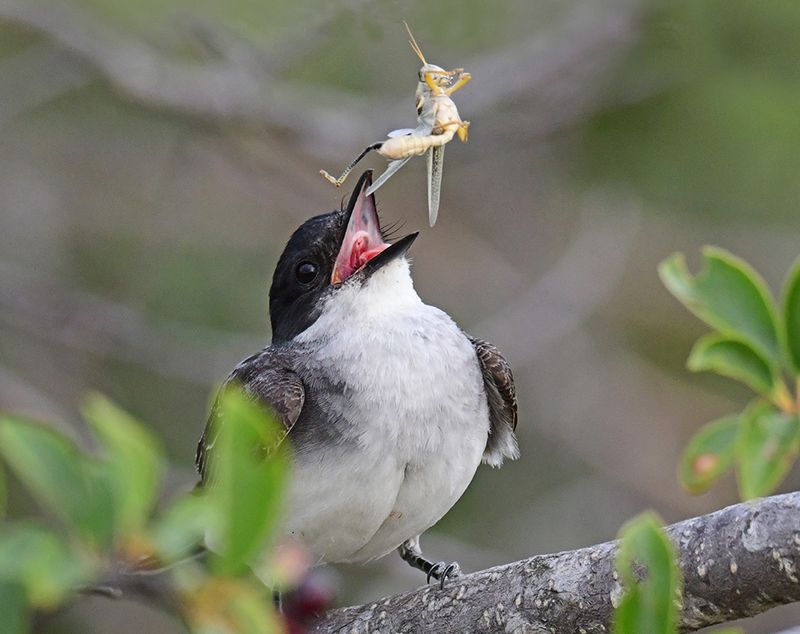
The Eastern Kingbird is a bold presence in the garden, with its sharp black and white contrast that stands out against the summer greenery. Known for its fierce territorial behavior, this bird is fearless in defending its domain.
Its aerial acrobatics as it catches insects are a spectacle to behold. The Kingbird’s striking coloration is not only eye-catching but also serves as a warning to intruders.
Its presence in a garden is marked by lively chases and vocal outbursts, adding a dynamic energy to the environment.
Black-and-white Casqued Hornbill
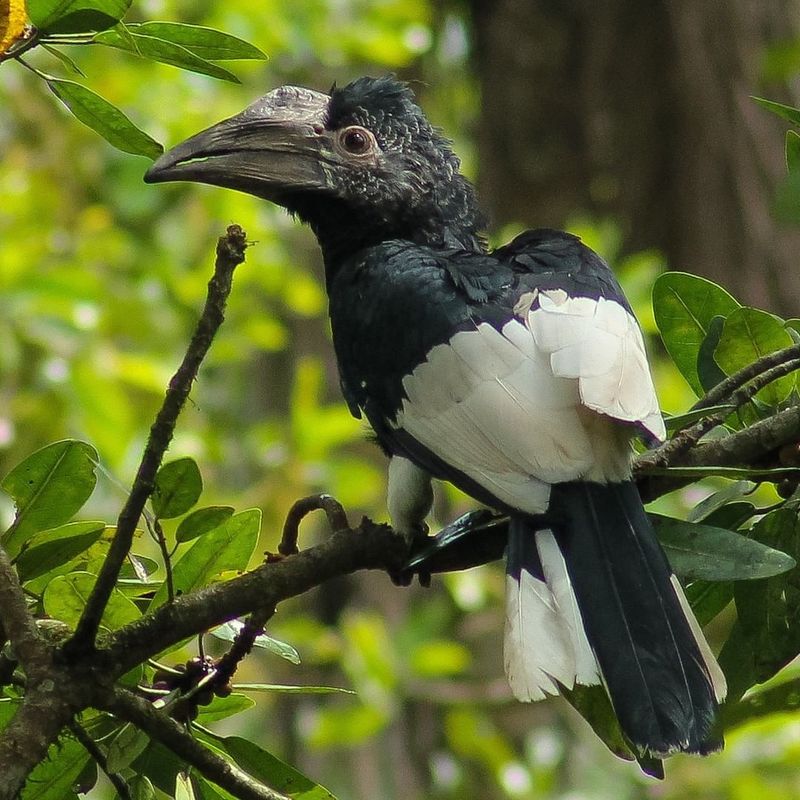
The Black-and-white Casqued Hornbill is nothing short of a tropical wonder. Its dramatic casque and striking coloration make it an unforgettable sight. Found in the lush rainforests, this bird’s bold appearance is matched by its charismatic personality.
These hornbills are known for their loud, resonant calls that can be heard echoing through the forest. Their social nature often leads them to be seen in pairs or small groups, adding a lively dynamic to any setting they inhabit.
These birds play a vital role in seed dispersal, ensuring the health of their forest habitats. Their presence brings a touch of the wild to gardens lucky enough to host them.
Northern Mockingbird
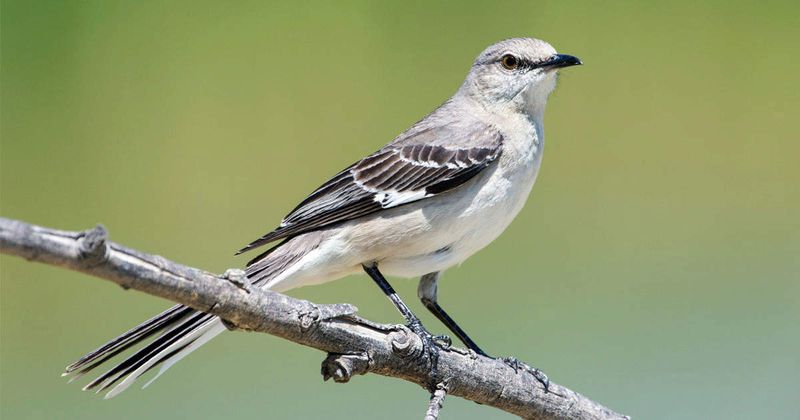
The Northern Mockingbird is a virtuoso of the avian world, known for its ability to mimic the songs of other birds. Its gray and white plumage blends harmoniously with any garden setting.
This bird is often heard before it is seen, as its melodious singing can fill an entire garden. Its territorial nature ensures that the Mockingbird is a vigilant guardian of its space.
In addition to its musical prowess, it plays a role in pest control, feeding on insects and small fruit, making it a beneficial presence.
White-breasted Nuthatch
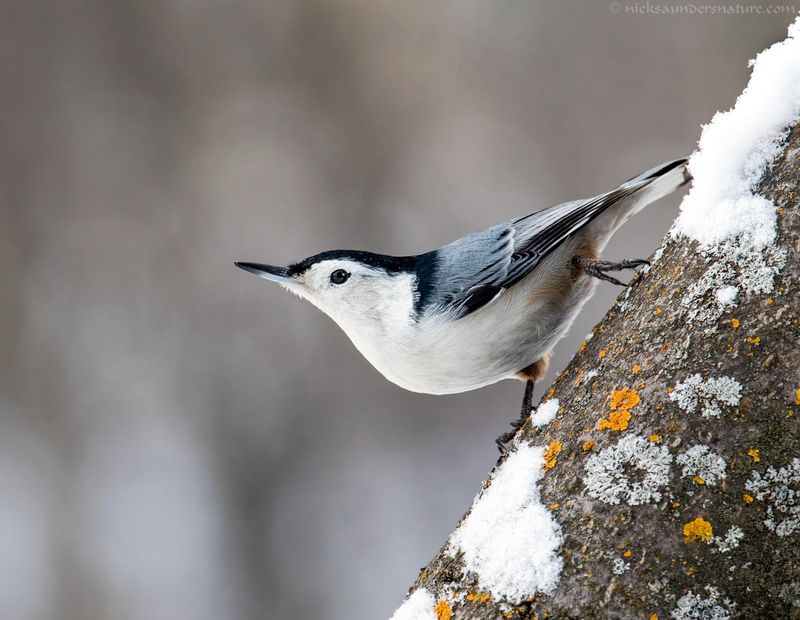
The White-breasted Nuthatch is a master of acrobatics, often seen spiraling down trees headfirst. Its black and white plumage, accentuated by a blue-gray back, makes it a distinct garden visitor.
Known for its fearless nature, it readily approaches feeders, delighting birdwatchers with its antics. Its loud, nasal calls are a unique addition to a garden’s soundscape.
The Nuthatch’s presence is beneficial, as it feeds on insects and seeds, maintaining a healthy balance in the garden. Its lively behavior adds a playful touch.
Common Loon
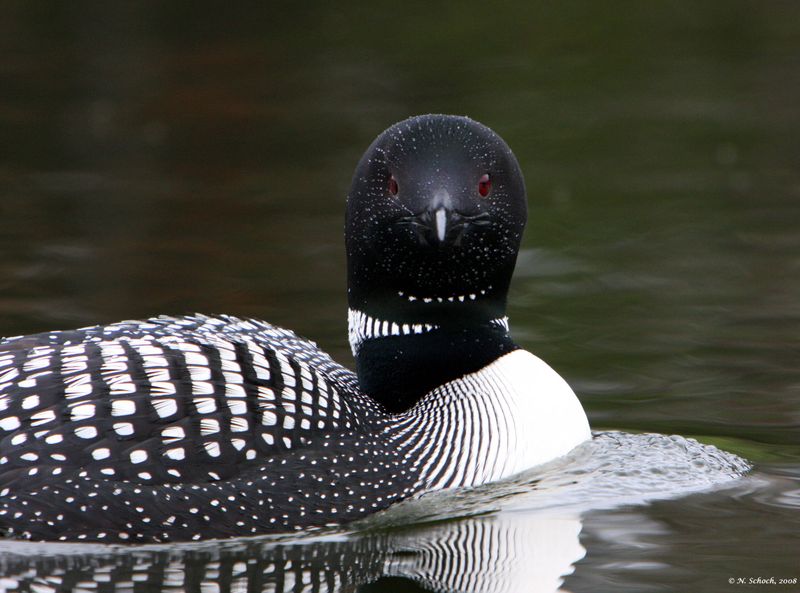
The haunting call of the Common Loon is an evocative addition to any garden pond. With its distinctive black and white checkered back and striking red eyes, it is a visual marvel.
Loons are excellent divers, often disappearing beneath the water’s surface to catch fish. Their presence in a garden pond brings a sense of serene wilderness.
Their haunting calls add a mystical element, especially at dusk. The Loon’s role in the ecosystem as a top predator helps maintain the pond’s ecological balance.
Downy Woodpecker

The Downy Woodpecker is a charming addition to any garden, with its distinctive black and white plumage and a splash of red on the head. Its gentle tapping on trees is a familiar sound.
Known for its adaptability, this small woodpecker is often seen at feeders, delighting onlookers with its acrobatic feeding habits. Its presence is a boon to the garden, as it helps control insect populations.
The Downy Woodpecker’s playful behavior and melodic drumming make it a lively garden companion, adding rhythm and movement.
Snowy Egret
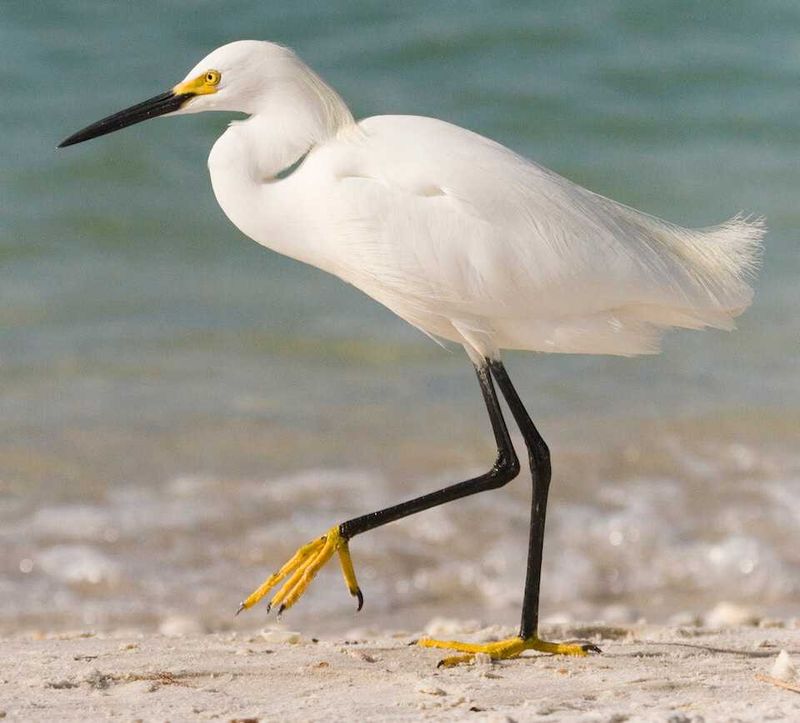
With plumage as pristine as freshly fallen snow, the Snowy Egret is a masterclass in elegance. Its black legs and yellow feet add a striking contrast, making it a standout wherever it goes. Often seen gracefully stalking through shallow waters, it strikes with lightning speed to catch its prey.
This bird is a joy to watch as it engages in a variety of hunting techniques, from standing still like a statue to stirring the water with its feet to flush out fish.
Did you know? The Snowy Egret’s plumes were once so highly prized for fashion that they were nearly hunted to extinction in the early 20th century.
Cape Batis
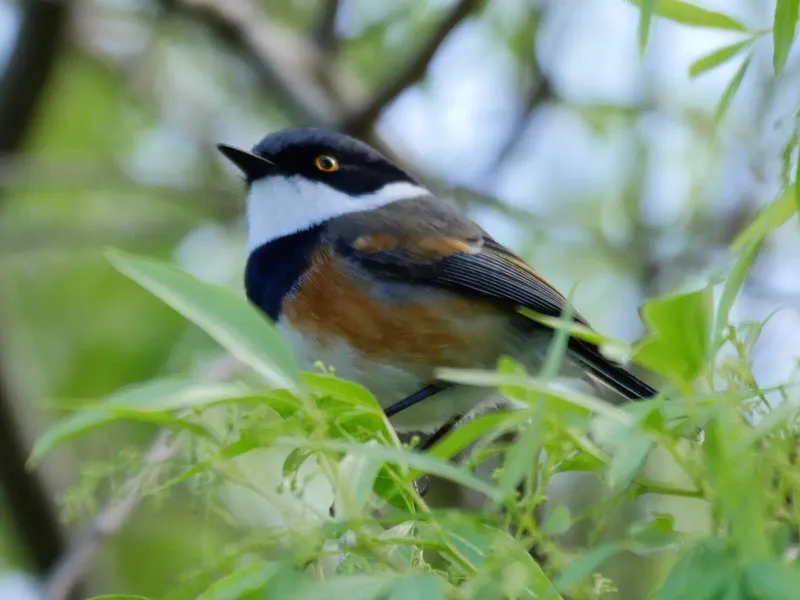
The Cape Batis is a small bird with an enchanting presence in any garden. Its black and white plumage, accented by a rich chestnut chest, creates a captivating contrast.
This bird is known for its flitting flight and melodious calls, which can serenade a garden with beautiful notes. It is often found among shrubs, adding a delightful dynamic to the landscape.
The Cape Batis is a delightful insectivore, aiding in pest control, and its presence enhances the garden’s biodiversity.
Black-and-white Warbler

The Black-and-white Warbler, with its distinctive zebra-striped plumage, is an active presence in any garden. Its unique foraging behavior, creeping along tree trunks, sets it apart from other warblers.
Known for its persistence and energy, this bird is constantly on the move, searching for insects hidden in the bark. Its high-pitched song adds a lively soundtrack to the garden.
The Warbler’s presence is a reminder of the rich diversity of avian life, offering both visual and auditory enjoyment for garden enthusiasts.
White-winged Chough
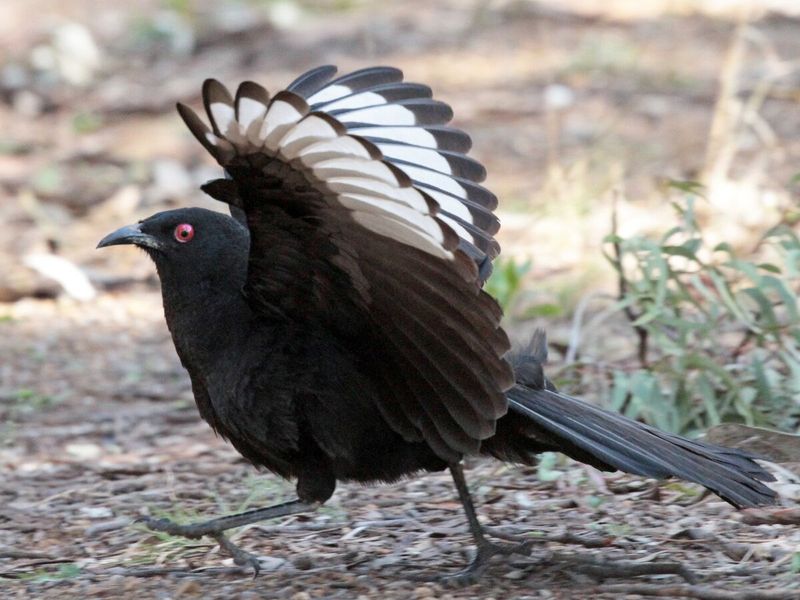
Meet the highly social White-winged Chough, whose playful antics can bring life to any garden. These birds are often seen in groups, working together to forage for food on the ground.
With their striking black body and contrasting white wing patches, they offer a compelling visual treat. Choughs are known for their cooperative breeding habits, where family groups help raise the young.
Did you know that these birds are often mistaken for crows due to their color, but they have a distinct call and behavior?

